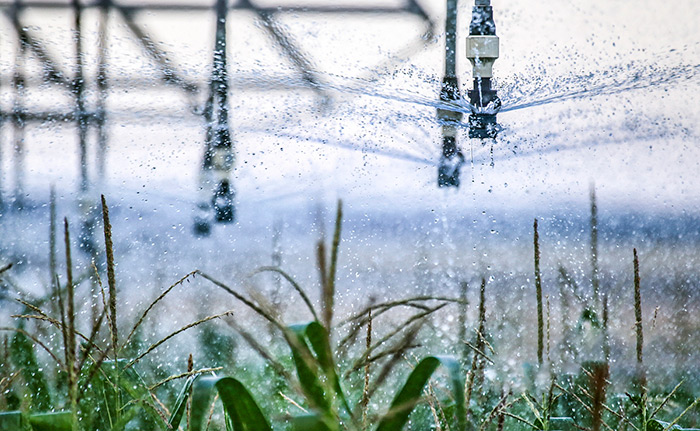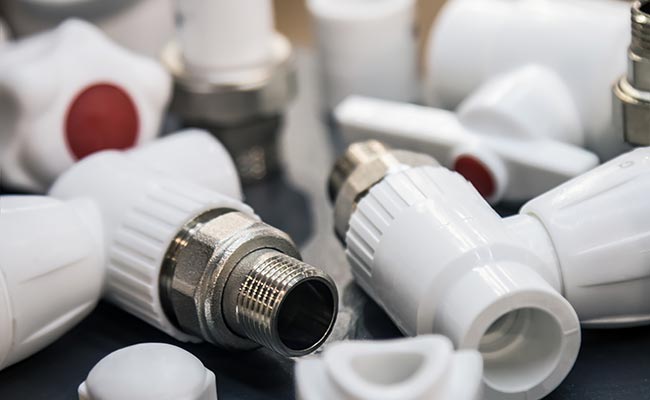Wondering if a PVC valve can handle your system’s pressure? A mistake can lead to costly blowouts and downtime. Knowing the exact pressure limit is the first step to a secure installation.
Most standard PVC ball valves are rated for a maximum pressure of 150 PSI (Pounds per Square Inch) at a temperature of 73°F (23°C). This rating decreases as the pipe size and operating temperature increase, so always check the manufacturer’s specifications.
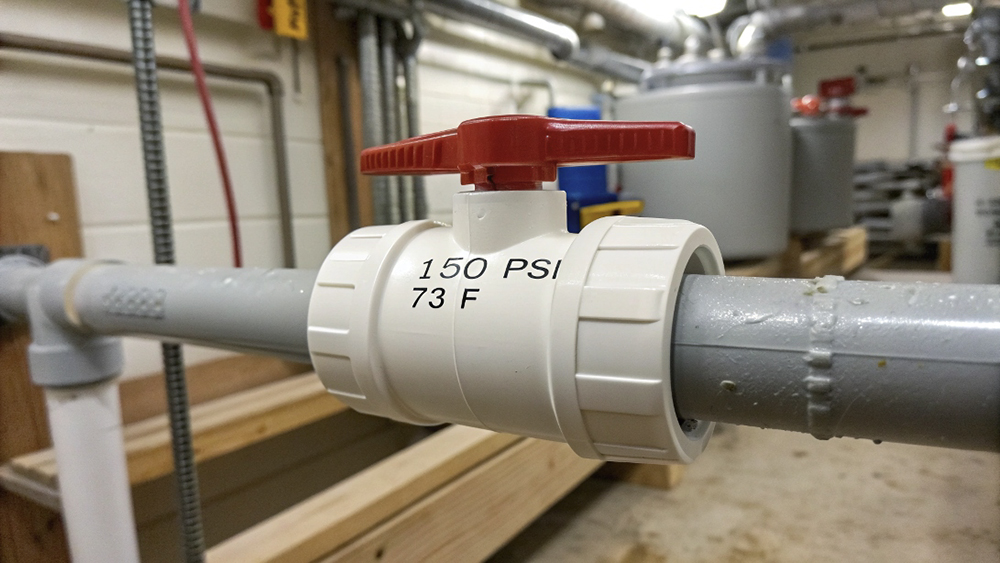
I remember a conversation with Budi, a purchasing manager in Indonesia who buys thousands of valves from us. He called me one day, concerned. One of his customers, a contractor, had a valve fail on a new installation. His reputation was on the line. When we investigated, we found the system was running at a slightly higher temperature than normal, which was enough to lower the valve’s effective pressure rating below what the system required. It was a simple oversight, but it highlighted a critical point: the number printed on the valve is not the whole story. Understanding the relationship between pressure, temperature, and size is essential for anyone sourcing or installing these components.
How much pressure can a PVC ball valve handle?
You see a pressure rating, but you aren’t sure if it applies to your specific situation. Assuming a single number fits all sizes and temperatures can lead to unexpected failures and leaks.
A PVC ball valve can typically handle 150 PSI, but this is its Cold Working Pressure (CWP). The actual pressure it can handle drops significantly as the temperature of the fluid rises. For example, at 140°F (60°C), the pressure rating can be cut in half.
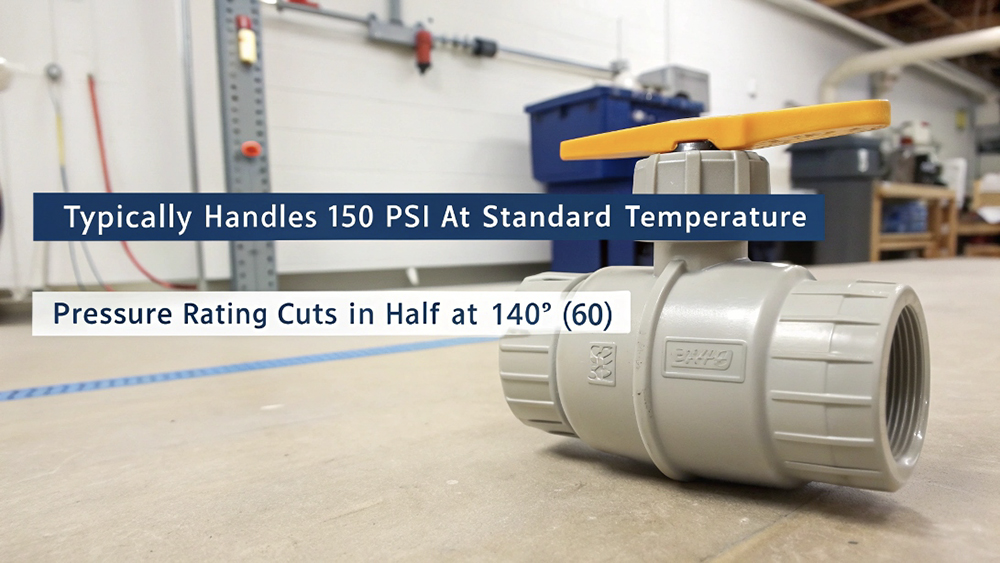
The key factor to understand here is what we call the “pressure de-rating curve.” It’s a technical term for a simple idea: as PVC gets warmer, it gets softer and weaker. Because of this, you have to use less pressure to keep it safe. Think of a plastic bottle. When it’s cold, it’s quite stiff. If you leave it in a hot car, it becomes soft and pliable. A PVC valve works the same way. Manufacturers provide charts that show you exactly how much pressure a valve can handle at different temperatures. As a rule of thumb, for every 10°F increase above ambient temperature (73°F), you should reduce the maximum allowable pressure by about 10-15%. This is why sourcing from a manufacturer who provides clear technical data is so important for professionals like Budi.
Understanding the Temperature and Size Relationship
| Temperature | Typical Pressure Rating (for a 2″ valve) | Material State |
|---|---|---|
| 73°F (23°C) | 100% (e.g., 150 PSI) | Strong and rigid |
| 100°F (38°C) | 75% (e.g., 112 PSI) | Slightly softened |
| 120°F (49°C) | 55% (e.g., 82 PSI) | Noticeably less rigid |
| 140°F (60°C) | 40% (e.g., 60 PSI) | Maximum recommended temp; significant de-rating |
Furthermore, larger diameter valves often have a lower pressure rating than smaller ones, even at the same temperature. This is due to physics; the larger surface area of the ball and valve body means the total force exerted by the pressure is much greater. Always check the specific rating for the specific size you are buying.
What is the pressure limit for a ball valve?
You know the pressure limit for PVC, but how does that compare to other options? Choosing the wrong material for a high-pressure job can be a costly, or even dangerous, mistake.
The pressure limit for a ball valve depends entirely on its material. PVC valves are for lower pressure systems (around 150 PSI), brass valves are for medium pressure (up to 600 PSI), and stainless steel valves are for high-pressure applications, often exceeding 1000 PSI.
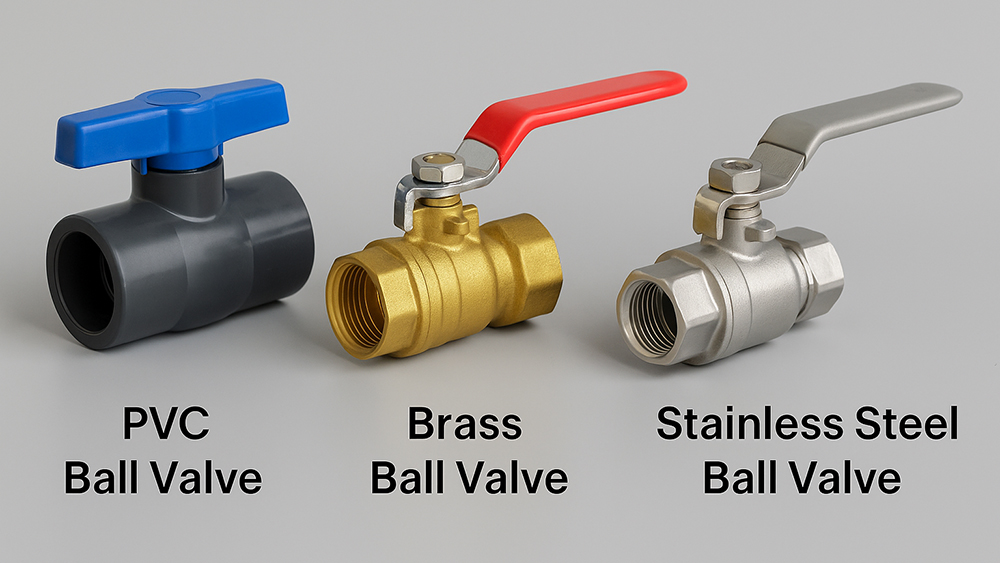
This is a conversation I have often with purchasing managers like Budi. While his main business is in PVC, his customers sometimes have special projects that require higher performance. Understanding the whole market helps him serve his clients better. He doesn’t just sell a product; he provides a solution. If a contractor is working on a standard irrigation line, PVC is the perfect, cost-effective choice. But if that same contractor is working on a high-pressure water main or a system with higher temperatures, Budi knows to recommend a metal alternative. This knowledge establishes him as an expert and builds long-term trust. It’s not about selling the most expensive valve, but the right valve for the job.
Comparing Common Ball Valve Materials
The right choice always comes down to the demands of the application: pressure, temperature, and the type of fluid being controlled.
| Material | Typical Pressure Limit (CWP) | Typical Temperature Limit | Best For / Key Advantage |
|---|---|---|---|
| PVC | 150 PSI | 140°F (60°C) | Water, irrigation, corrosion resistance, low cost. |
| Brass | 600 PSI | 400°F (200°C) | Potable water, gas, oil, general utility. Good durability. |
| Stainless Steel | 1000+ PSI | 450°F (230°C) | High pressure, high temp, food-grade, harsh chemicals. |
As you can see, metals like brass and stainless steel have a much higher tensile strength than PVC. This inherent strength allows them to contain much higher pressures without risk of bursting. While they come at a higher cost, they are the safe and necessary choice when system pressures exceed the limits of PVC.
What is the maximum air pressure for PVC?
You might be tempted to use affordable PVC for a compressed air line. This is a common but extremely dangerous idea. A failure here is not a leak; it’s an explosion.
You should never use standard PVC ball valves or pipes for compressed air or any other gas. The maximum recommended air pressure is zero. Pressurized gas stores tremendous energy, and if the PVC fails, it can shatter into sharp, dangerous projectiles.
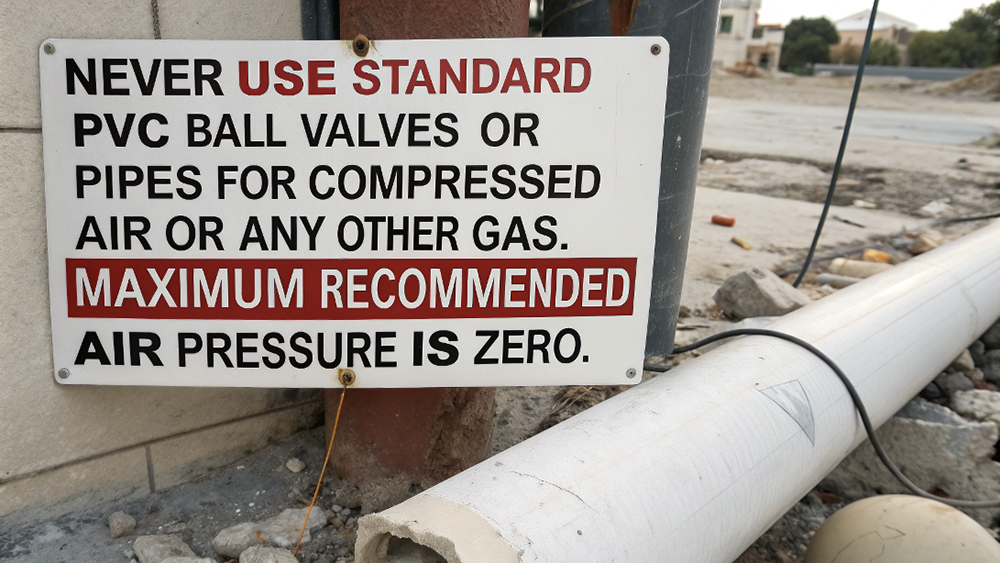
This is the most important safety warning I give my partners, and something I stress to Budi’s team for their own training. The danger is not well understood by everyone. The reason is a key difference between liquids and gases. A liquid like water is non-compressible. If a PVC pipe holding water cracks, the pressure drops instantly, and you get a simple leak or a split. A gas, however, is highly compressible. It’s like a stored spring. If a PVC pipe holding compressed air fails, all that stored energy is released at once, causing a violent explosion. The pipe doesn’t just crack; it shatters. I have seen photos of the damage this can cause, and it’s a risk no one should ever take.
Hydrostatic vs. Pneumatic Pressure Failure
The risk comes from the type of energy stored in the system.
- Hydrostatic Pressure (Water): Water doesn’t compress easily. When a container holding water fails, the pressure is immediately relieved. The result is a leak. The energy dissipates quickly and safely.
- Pneumatic Pressure (Air/Gas): Gas compresses, storing a large amount of potential energy. When the container fails, this energy is released explosively. The failure is catastrophic, not gradual. This is why organizations like OSHA (Occupational Safety and Health Administration) have strict regulations against using standard PVC for compressed air.
For pneumatic applications, always use materials specifically designed and rated for compressed gases, such as copper, steel, or specialty plastics engineered for that purpose. Never use plumbing-grade PVC.
What is the pressure rating of a ball valve?
You have a valve in your hand, but you need to know its exact rating. Misreading or ignoring the markings on the body can lead to using an underrated valve in a critical system.
The pressure rating is a value stamped directly onto the ball valve’s body. It usually shows a number followed by “PSI” or “PN,” representing the maximum Cold Working Pressure (CWP) at ambient temperature, typically 73°F (23°C).
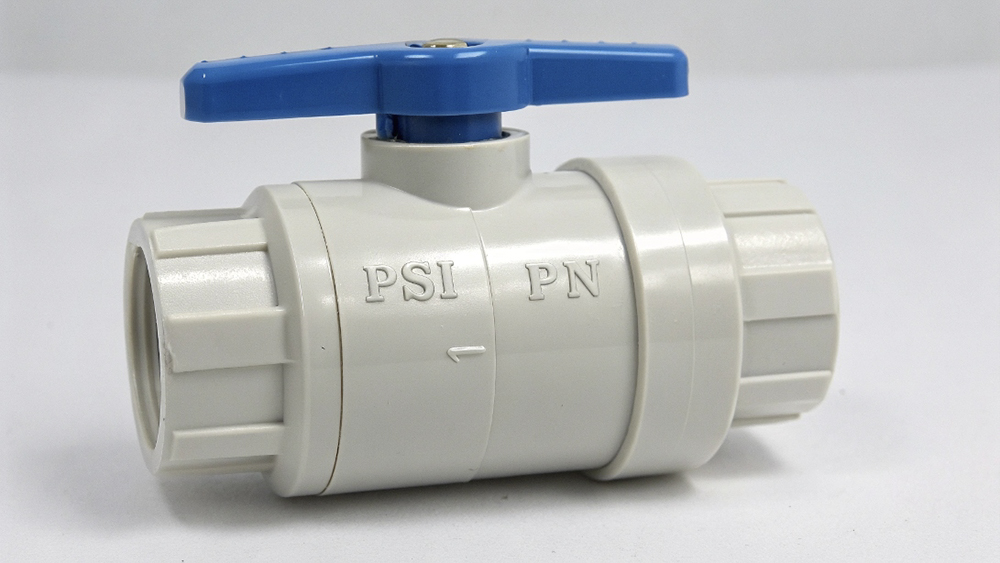
I always encourage our partners to train their warehouse and sales staff to read these markings correctly. It’s the valve’s “ID card.” When Budi’s team unloads a shipment, they can instantly verify that they’ve received the correct product specifications. When his salespeople talk to a contractor, they can physically point to the rating on the valve to confirm it meets the project’s needs. This simple step removes any guesswork and prevents errors before the valve even gets to the job site. The markings are a promise from the manufacturer about the valve’s performance capabilities, and understanding them is fundamental to using the product safely and effectively. It’s a small detail that makes a big difference in ensuring quality control throughout the supply chain.
How to Read the Markings
Valves use standardized codes to communicate their limits. Here are the most common ones you’ll find on a PVC ball valve:
| Marking | Meaning | Common Region/Standard |
|---|---|---|
| PSI | Pounds per Square Inch | United States (ASTM standard) |
| PN | Pressure Nominal (in Bar) | Europe and other regions (ISO standard) |
| CWP | Cold Working Pressure | A general term indicating the pressure at ambient temperatures. |
For example, you might see “150 PSI @ 73°F”. This is very clear: 150 PSI is the maximum pressure, but only at or below 73°F. You might also see “PN10″. This means the valve is rated for a nominal pressure of 10 Bar. Since 1 Bar is about 14.5 PSI, a PN10 valve is roughly equivalent to a 145 PSI valve. Always look for both the pressure number and any associated temperature rating to get the full picture.
Conclusion
A PVC ball valve’s pressure limit is typically 150 PSI for water, but this rating drops with heat. Most importantly, never use PVC for compressed air systems.
Post time: Jul-02-2025


